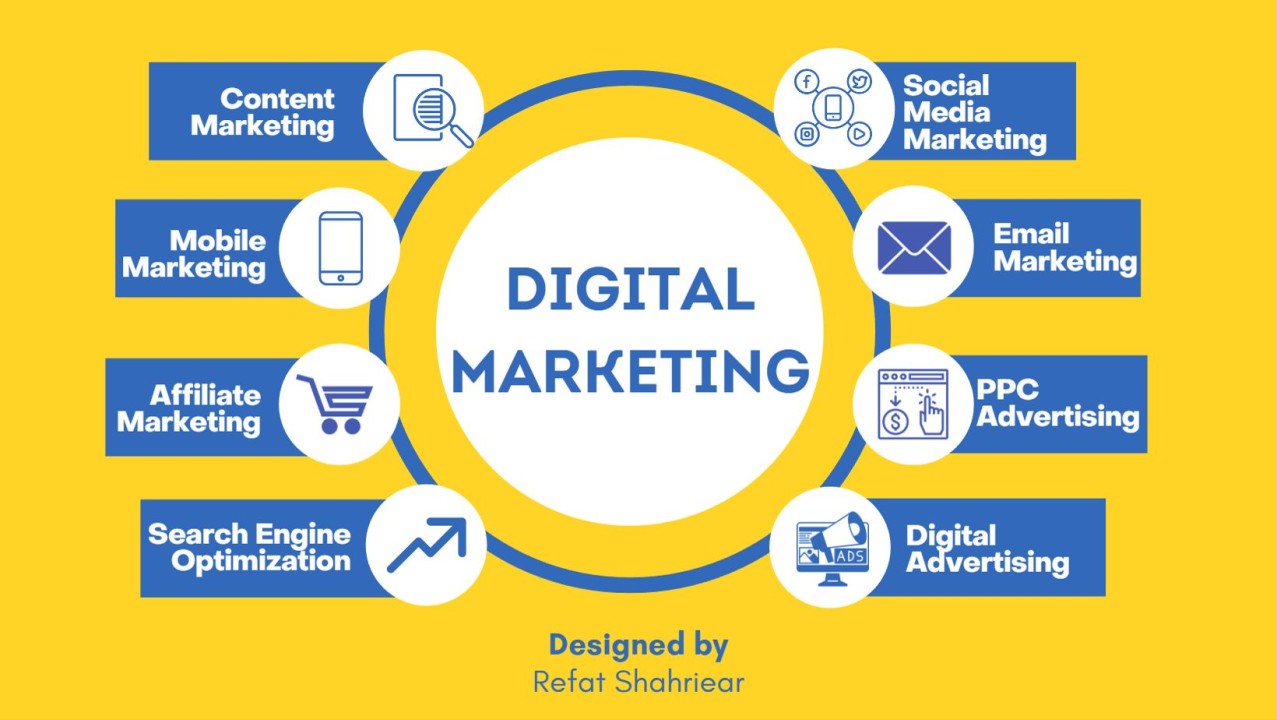Analyzing Data to Enhance Your Digital Advertising Performance
In an era where electronic footprints are very useful, evaluating information is critical to optimizing your electronic advertising efficiency. Through metrics such as Click-Through Rates and Conversion Fees, marketers can derive workable understandings that drive significant engagement. Devices like Google Analytics and heatmaps use a granular view of audience habits, allowing a targeted approach to web content development. This data-driven strategy not just lines up marketing initiatives with customer preferences yet likewise makes best use of Return on Financial investment. Comprehending how to continually keep an eye on and adapt to these understandings is vital for maintaining dexterity in a rapidly progressing digital landscape. Interested about taking your advertising and marketing to the next degree?
Identifying Key Metrics

Noticeable among these metrics are Click-Through Price (CTR), Conversion Price (CR), and Roi (ROI) CTR suggests the percent of users that click on an advertisement or web link, providing insight right into the efficiency of imaginative properties and targeting approaches. CR steps the percentage of internet site visitors who complete a preferred activity, such as making an acquisition or filling out a type, hence mirroring the efficiency of the sales funnel. ROI, on the other hand, evaluates the productivity loved one to the costs incurred, offering a detailed sight of the economic influence of marketing activities.
Furthermore, other important metrics like Consumer Procurement Expense (CAC) and Lifetime Value (LTV) offer much deeper insights right into the cost-effectiveness and long-term value generated from advertising and marketing campaigns. By diligently tracking these KPIs, businesses can make data-driven choices to improve and improve their digital advertising and marketing approaches.
Recognizing Client Behavior
Building on the structure of key metrics, a comprehensive understanding of client actions supplies a nuanced perspective that drives a lot more effective electronic advertising strategies. By assessing exactly how clients interact with your on the internet platforms, you can reveal patterns and preferences that educate targeted advertising and marketing initiatives. This involves looking at numerous touchpoints such as website navigation, material intake, and social networks interaction.
Understanding client behavior begins with segmenting your target market based upon demographic, psychographic, and behavior information. This division enables individualized marketing, satisfying certain needs and preferences of distinctive teams. As an example, determining single purchasers versus regular purchasers can assist customize promotional offers and interaction approaches accordingly.
Furthermore, mapping the client journey is critical. This entails tracking the actions a consumer extracts from first recognition to last purchase, and even post-purchase interaction. By doing so, you can determine prospective drop-off points and optimize these locations to boost consumer retention and conversion prices.
Additionally, assessing responses and assesses deals straight insights into consumer complete satisfaction and areas for renovation. Comprehending the inspirations, discomfort factors, and expectations of your audience allows the crafting of even more resonant and reliable advertising messages, ultimately driving greater involvement and loyalty.
Leveraging Analytical Tools
Using the power of logical tools is essential for optimizing electronic marketing efficiency. These tools provide granular understandings into various elements of marketing projects, from audience involvement to conversion rates. By leveraging systems such as Google Analytics, HubSpot, and Adobe Analytics, marketers can track vital performance indications (KPIs) and acquire workable data. This data-driven approach enables businesses to make enlightened decisions, improve techniques, and allocate sources much more properly.
The energy of logical tools expands beyond simple data collection. They assist in the identification of fads, patterns, and anomalies that may otherwise go unnoticed. Heatmaps can reveal user interaction with web site This Site aspects, while A/B screening tools can identify the efficiency of various web content variants. Furthermore, predictive analytics can forecast future patterns, enabling marketers to stay ahead of the curve.
Integrating logical tools with various other electronic advertising platforms, such as social networks and email advertising software application, develops a cohesive environment for detailed efficiency tracking. This all natural view makes sure that all aspects of an electronic marketing strategy are lined up and maximized. In an increasingly affordable digital landscape, the ability to utilize analytical devices properly can be the making a decision variable between success and stagnation.
Enhancing Content Strategy

One trick element of enhancing web content technique is comprehending audience preferences and actions. Analytics can reveal group info, top engagement times, and preferred material styles, such as videos, infographics, or blogs. This understanding enables online marketers to tailor their material to fulfill the details requirements and passions of their target market, thus enhancing the possibility of involvement and conversion.
Furthermore, continual tracking and evaluation of material performance offer understandings right into what is working and what needs Learn More Here adjustment. For instance, A/B screening different headlines or calls-to-action can generate useful data on aspects that drive one of the most interaction. Furthermore, tracking material performance throughout various channels helps in optimizing circulation strategies, making sure that the right web content reaches the appropriate audience with the most effective systems.
Basically, data-driven content strategy improvement is an intermittent process of implementation, analysis, and improvement, geared in the direction of supplying maximum worth to both the target market and business.
Determining Campaign Success
Determining project success is essential for comprehending the efficiency of digital advertising and marketing campaigns and making informed decisions for future initiatives. Accurate dimension permits marketers to examine if their methods are achieving wanted objectives, such as boosting brand name recognition, producing leads, or enhancing sales. Key performance signs (KPIs) are vital metrics that offer understandings into campaign efficiency. Typical KPIs consist of click-through prices (CTR), conversion rates, roi (ROI), and consumer acquisition costs (CAC)
To properly measure project success, it is important to establish clear, measurable objectives from the beginning. These goals ought to be straightened with more comprehensive organization purposes and provide a standard for assessing performance. Utilizing devices like Google Analytics, social media analytics, and CRM systems can facilitate top article the tracking of these KPIs and provide real-time information understandings.
Examining this data assists determine which parts of the project are working well and which need changes. For example, a low CTR may show that advertisement copy needs improvement, while a high CAC can suggest a demand for targeting optimization. Constant tracking and evaluation guarantee that marketing efforts are responsive and active, inevitably causing extra effective and efficient campaigns.
Final Thought
In verdict, the optimization of digital marketing efficiency via data analysis is vital. Determining crucial metrics such as Click-Through Fees (CTR) and Conversion Fees (CR) enables a deeper understanding of consumer behavior. Leveraging logical tools, consisting of Google Analytics and heatmaps, improves material approaches and project performance. Continuous surveillance and data-driven adjustments make sure that marketing efforts line up with evolving patterns, ultimately driving higher Roi (ROI) and attaining calculated goals.
